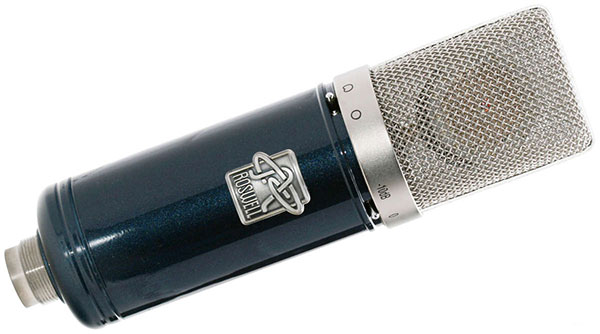Roswell Pro Audio Unveiling Delphos II Condenser Microphone

Roswell Pro Audio is introducing the Delphos II, an update to the Delphos all-purpose studio condenser microphone.
The original model was designed with an un-hyped and natural frequency response, high sensitivity, and low self-noise, with the Delphos II retaining these characteristics and adding a third polar pattern (figure 8) as well as a newly designed, low-noise power supply housed in a new, larger body in a custom metallic blue paint job.
“We originally built the Delphos for recording engineers looking for an ultra-clean FET sound,” explains Roswell founder Matt McGlynn. “This new version has been updated based on user feedback and the result is another mic in our line that we’re very proud of, particularly on vocals and acoustic guitar where its balanced frequency response, low noise, and high output outperform most competitive offerings costing much more.”
The microphone uses an optimized transformerless circuit designed to provide a pristine, low-distortion signal path. Two switches provide a choice of cardioid, omni and figure 8 polar patterns, as well as a 10-dB pad.
The mic has a stated frequency range of 20 Hz to 16 kHz, with a response curve carefully tailored to provide full lows, neutral mids, and high-frequency detail without sibilance. Stated sensitivity is 40mV/Pa, with a self-noise level rated at 12 dBA.
Delphos II is assembled in California, burned in, and extensively tested after manufacturing to ensure the best possible performance. “Because we build and test each Delphos II in-house, we take steps that mass-produced brands wouldn’t dream of, McGlynn adds. “For instance, we match capacitors within each mic, and manually bias every JFET to ensure the highest possible sound pressure level with minimal distortion.
“After assembly,” he continues, “we put each mic through an acoustic sweep test to measure its response. We modify each circuit individually to set its high-frequency peak and roll-off. After that, we burn in each microphone for 24 hours, and then conduct final listening tests and QC inspections. We defined this process to ensure that every Roswell microphone delivers superior performance.”